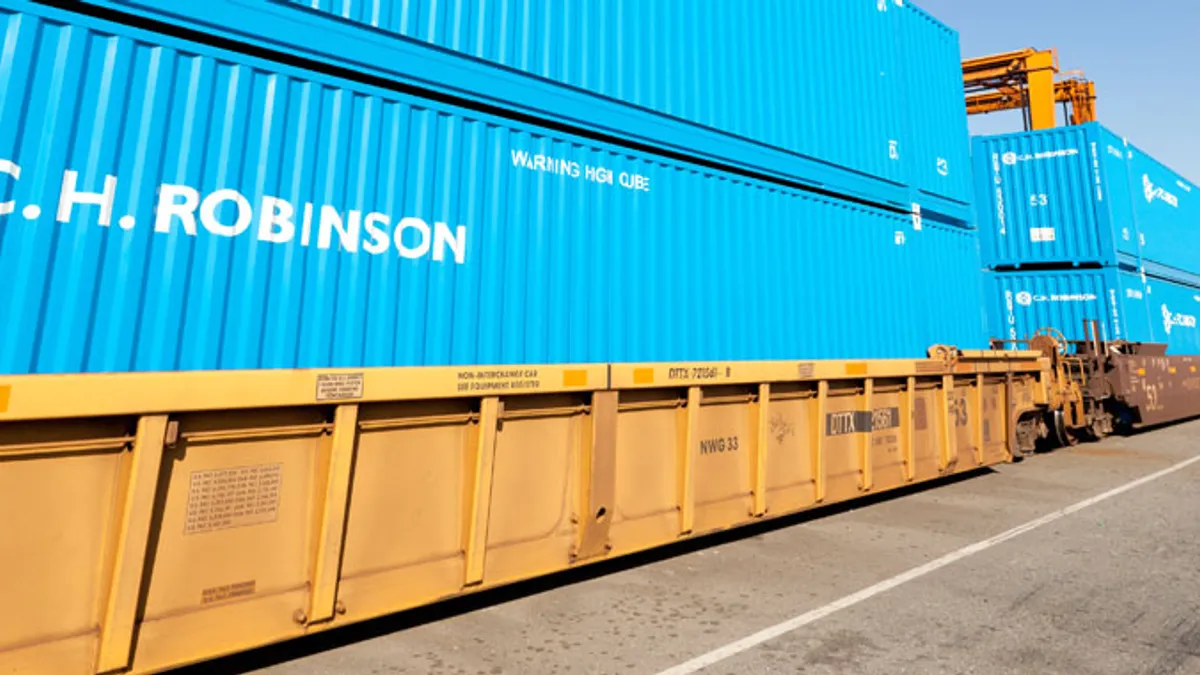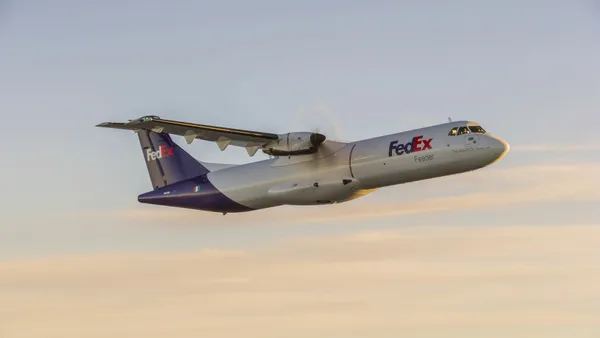Personal protective equipment (PPE) supply chains face myriad challenges, as depressed airfreight capacity, turbulent and changeable compliance processes, and constant concern about counterfeits make successfully procuring these essential supplies difficult at every step.
With coronavirus cases still rising in 20 states, governments and hospital systems are wading deeper into the weeds of supply chain management than they ever have before, according to C.H. Robinson CEO Bob Biesterfeld.
"If you think about the channels of demand that opened up for these critical goods ... they were largely being procured by companies and states and entities that didn't have a lot of experience," the CEO told Supply Chain Dive in an interview Wednesday.
More than 90% of PPE shipments have been disrupted in some way, according to C.H. Robinson, which is part of the Minnesota Task Force that brought together public and private expertise to help the state acquire PPE.
Biesterfeld told Supply Chain Dive it takes know-how, but also muscle in the form of size and scale, to get ahead in the PPE game.
"Our overall tonnage that we're moving through [China] has allowed us to really stay ahead on that side," Biesterfeld said. "I don't want to say that it's the only thing that worked, but it's certainly a critical part of what's allowed us to help states and companies to participate in this journey," the CEO said.
States have partnered with private enterprise and each other to build the scale-driven buying power Biesterfeld described. Connecticut, Delaware, Massachusetts, New Jersey, New York, Pennsylvania and Rhode Island formed a partnership in early May with the intention of consolidating $5 billion in buying power to drive down PPE and ventilator prices and hasten delivery.
"We're much stronger together," Connecticut Governor Ned Lamont said during the press conference announcing the partnership. "I wouldn't mind having some of that New York purchasing power. Thanks for sharing that with Connecticut going forward."
Biesterfeld also said organizations procuring PPE need eyes on the ground to vet product as "nefarious" actors have entered the fray following the demand explosion.
"We've certainly experienced [it] in quality assurance and co-loading and things of that nature at origin. But, vetting product and ensuring that it is what people are saying it is and that factory actually exists or that location actually exists — those are newer experiences for us," Biesterfeld said.

The frenzy of the first three months sourcing PPE overseas may be calming down, according to the CEO. But he said PPE procurement is nowhere near any form of normal, with the virus spreading and freight capacity still shaken up.
Getting PPE out of China will involve some form of elevated airfreight rates and transit delays for the foreseeable future. Airfreight rates between China and the U.S. have begun to moderate after hitting their peak in mid-May. Rates from China/Hong Kong to the U.S. in mid-June are about half the price from mid-May's peak, but still nearly double late-February rates, according to the TAC index. Airfreight delivery speed from China remains at least double pre-pandemic time tables.
But conditions are normalizing, at least to the point where shippers can revert to ocean freight for these items and employ some level of demand planning.
"Whereas air was likely heavily used on the front-end to establish an immediate stockpile or respond to an immediate increase in demand, now there's the ability to start to balance the portfolio of modes being used," Biesterfeld said.














